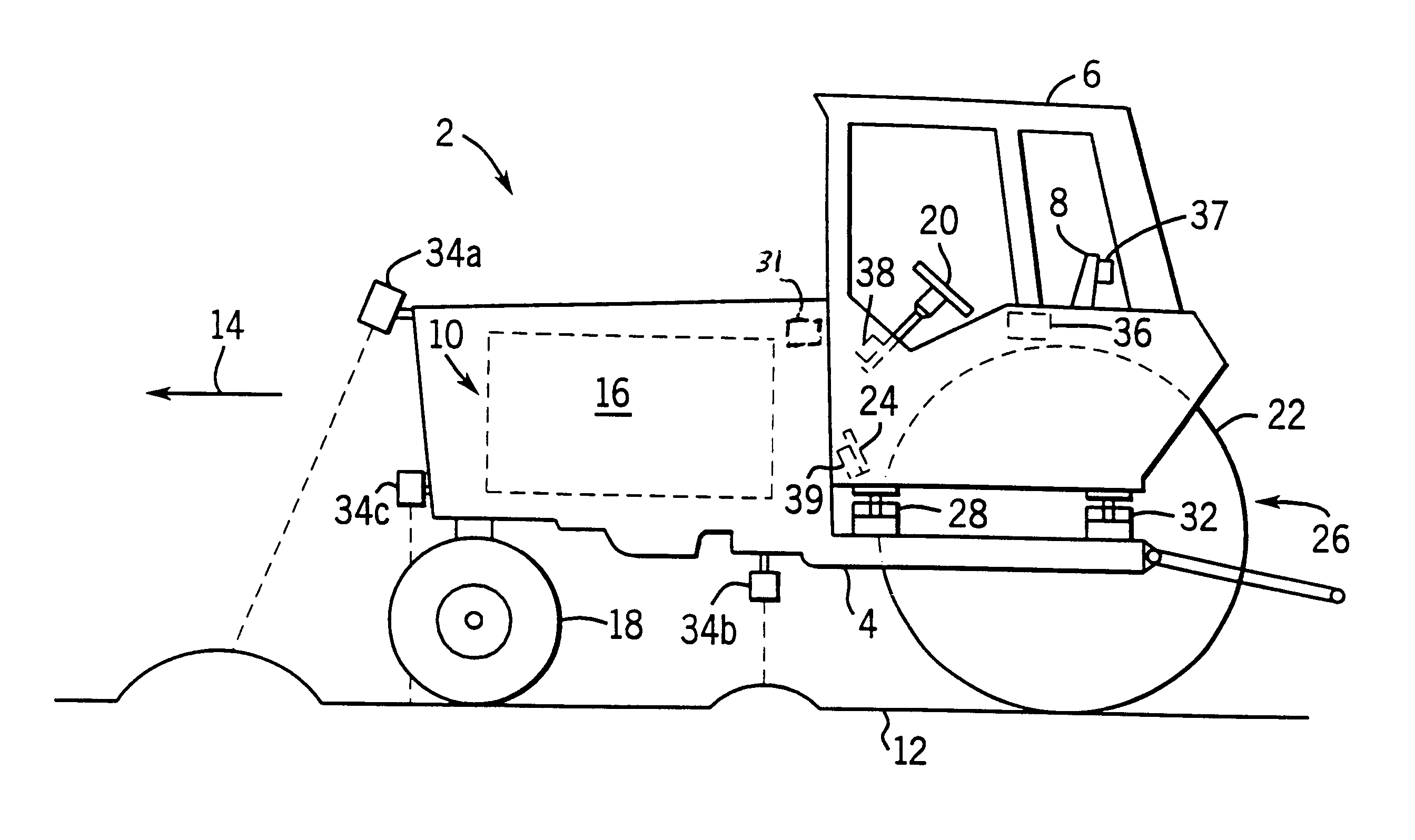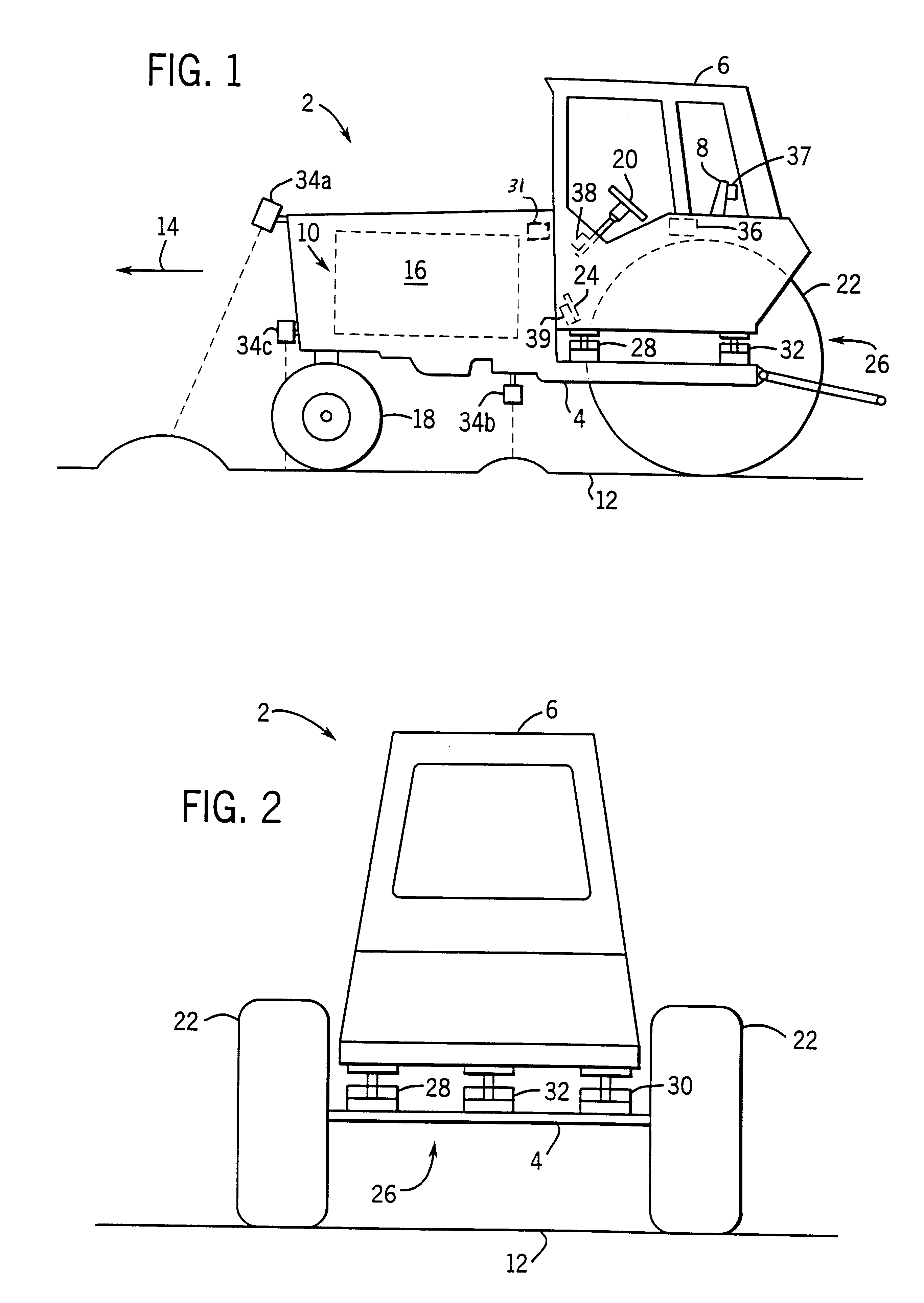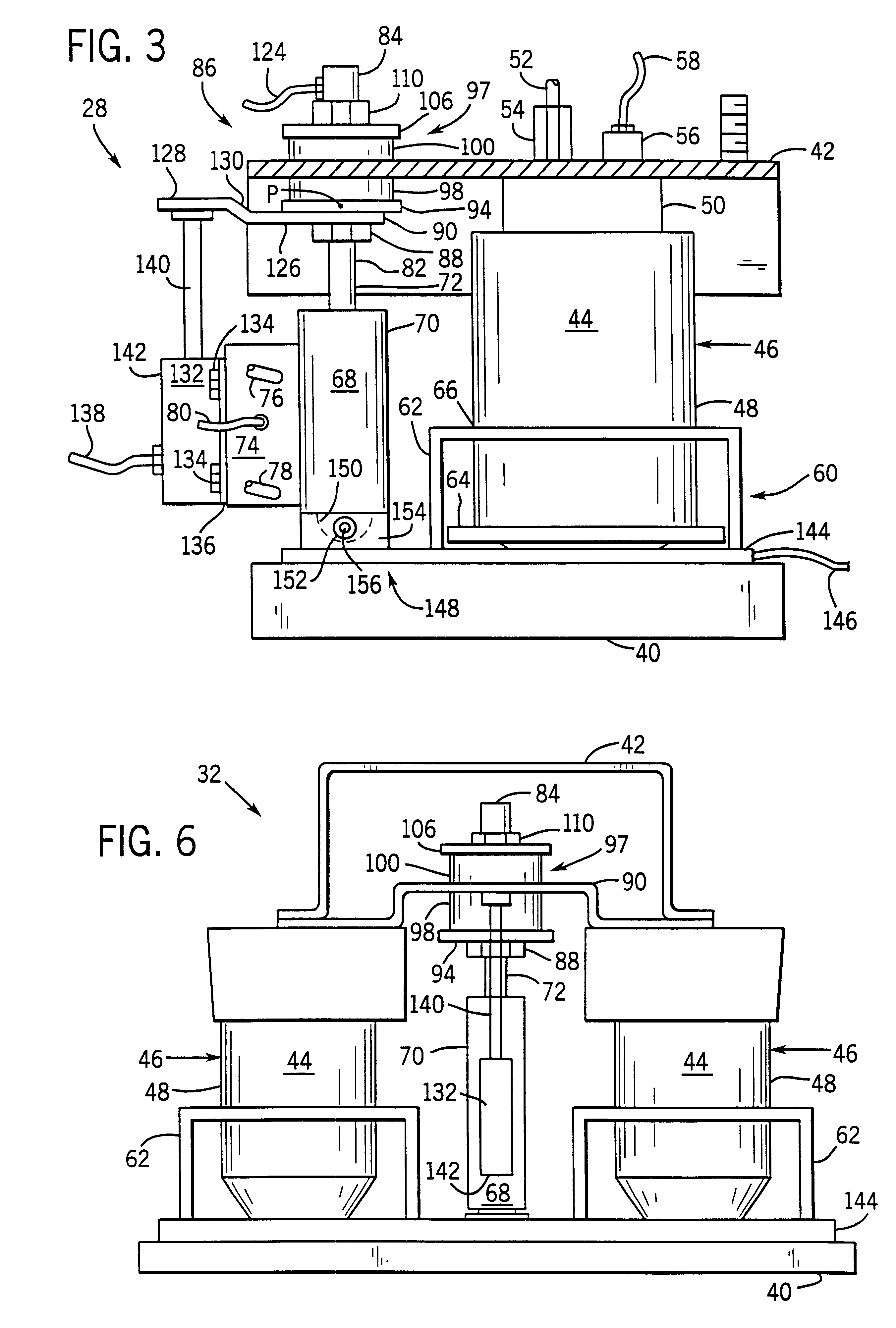Apparatus for facilitating reduction of vibration in a work vehicle having an active CAB suspension system
a technology of active suspension system and apparatus, which is applied in the direction of cycle equipment, instruments, tractors, etc., can solve the problems of affecting the ride quality and operator comfort of the work vehicle, affecting the comfort of the operator, and affecting the movement of the cab. , to achieve the effect of reducing vibration
- Summary
- Abstract
- Description
- Claims
- Application Information
AI Technical Summary
Benefits of technology
Problems solved by technology
Method used
Image
Examples
Embodiment Construction
[0034]Referring to FIGS. 1 and 2, a work vehicle 2 (e.g., an agricultural tractor) includes a frame or chassis 4, an operator's cab 6 supported above chassis 4, a seat or dual seats 8 within cab 6, and a propulsion system 10 to propel vehicle 2 along a ground surface 12 in a forward direction 14. Propulsion system 10 includes an engine 16 secured to chassis 4, a transmission (not shown) coupled to engine 16, two driven or non-driven front wheels 18 steered by a steering wheel 20, and two rear wheels 22 driven by engine 16 via the transmission. Brake pedals 24 located in cab 6 operate left and right service brakes (not shown) to provide braking. Cab 6 is supported above chassis 4 by an active cab suspension system (ACS) 26 including two front active vibration isolators 28 and 30 located on opposite sides of cab 6 and a rear isolator 32 centrally located at the rear of cab 6 between wheels 22. The three-point suspension system provides stable control of movement responsive to pitch, r...
PUM
 Login to View More
Login to View More Abstract
Description
Claims
Application Information
 Login to View More
Login to View More - R&D
- Intellectual Property
- Life Sciences
- Materials
- Tech Scout
- Unparalleled Data Quality
- Higher Quality Content
- 60% Fewer Hallucinations
Browse by: Latest US Patents, China's latest patents, Technical Efficacy Thesaurus, Application Domain, Technology Topic, Popular Technical Reports.
© 2025 PatSnap. All rights reserved.Legal|Privacy policy|Modern Slavery Act Transparency Statement|Sitemap|About US| Contact US: help@patsnap.com



